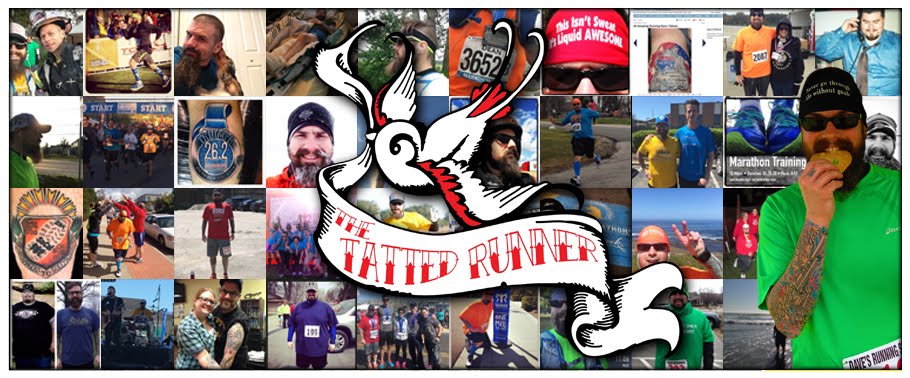The Glass City Marathon has a long and rich history that dates all the way back to a time before I was born. Since 1971 the Glass City Marathon has seen its share of changes from title sponsors, slight name changes, location of the event and the time of year. Faced with the adversity of losing its title sponsorship which forced the race to shut down for a short time, like a phoenix rising from the ashes, the GCM has been reborn to become the vital linchpin of Northwest Ohio's running community. Below is a brief overview of that rich history and those that worked so hard to make it a true gem of Toledo, Ohio.
The Beginning: 1971 – 1983
The very first Glass City Marathon started and finished at the
University of Toledo on June 20, 1971. Sy Mah ran the race that day, as
did two Churchills (Walt Jr., a key founder of the Toledo Roadrunners
Club, and Walt III) and a runner named Fred Lebow who came all the way
from New York City. We hear that Lebow accomplished some things later
back East and are glad we could give him some ideas. The race remained
on Fathers’ Day and anchored at the University of Toledo until 1981 when
the race was moved to the Fall and to Side Cut Park of the MetroParks
of Toledo. In 1983 the race moved to downtown Toledo and was titled the
Pepsi Challenge Glass City Classic Marathon. Despite the seeming
momentum of a new downtown course, Pepsi did not renew its sponsorship
and the race fell dormant for the next six years.
Rebirth: 1990 – 2009

In
1989 a group of influential Toledo Roadrunners revived the Glass City
Marathon and Pam Graver was key to this revival as she took on the task
of directing the race. The race was dedicated to the late Sy Mah, who
had passed away in 1988. From 1990 to 2009, the Glass City Marathon
served as the key cog in the running world of Northwest Ohio with the
course starting and finishing downtown.
Rocket Return: 2010 – Present
In 2010, the Toledo Roadrunners Club decided to return the event to its
historical roots at the University of Toledo and give the event a new
look and new energy. The results have been dramatic. The half marathon
has sold out every year since the event’s return to the University of
Toledo and participation in the marathon, half marathon, marathon relay,
and 5K races has grown from over 3,200 in 2010 to over 4,500 in 2011 to
over 5,800 in 2012. In 2012, Owens-Corning came on board as the sponsor
of the half marathon and Medical Mutual of Ohio became the title
sponsor for the Glass City Marathon.
2013 and 2014 saw continued growth topping 7,000 in 2014 with the
Owens Corning Half Marathon selling out for the sixth consecutive year.
Pam Graver-Koenig
Pam
Graver-Koenig was a special person, an avid runner, and a dynamic
contributor to the Toledo Roadrunners Club of historic proportion. Pam
was a member and past president of the TRRC. And there may not be the
TRRC Glass City Marathon were it not for Pam.
In 1990, after six years without a Glass City Marathon, Pam agreed to
help renew the event, became the race director and played a major role
in the resurrection of a Northwest Ohio running tradition. Pam was also a TRRC Sy Mah Award recipient, the award the club bestows for lifetime achievement to the club and the sport.
Pam passed away on July 4, 2011. In 2012, the Toledo Roadrunners Club
Scholarship Fund in Honor of Pam Graver-Koenig was established. For
more information on the scholarship or to give please go to the Toledo Roadrunners site.
Sy Mah
 Sy
Mah was an influential figure in the running boom of the 1970s. Mah was
an assistant professor of physical education at the University of
Toledo from 1970 to 1988. Mah did not start running marathons until he
was 40, yet at the time of his death in 1988, Mah held the record for
the most lifetime marathons at 524.
The Sy Mah Memorial Scholarship at the University of Toledo was
established in 1990 by his friends and family with financial support
from the Toledo Roadrunners Club. In addition to meeting various
academic standards, qualified recipients within the College of Health
Science and Human Service are required to be “avid social runners.”
Sy
Mah was an influential figure in the running boom of the 1970s. Mah was
an assistant professor of physical education at the University of
Toledo from 1970 to 1988. Mah did not start running marathons until he
was 40, yet at the time of his death in 1988, Mah held the record for
the most lifetime marathons at 524.
The Sy Mah Memorial Scholarship at the University of Toledo was
established in 1990 by his friends and family with financial support
from the Toledo Roadrunners Club. In addition to meeting various
academic standards, qualified recipients within the College of Health
Science and Human Service are required to be “avid social runners.”
Mah ran the Glass City Marathon several times, including at the
inaugural event in 1971. Runners in the Glass City Marathon pass by a
life-size statue of Mah in Olander Park Mah is believed to have said, “I
believe Americans have been brainwashed with the idea that they must do
less because increased age will result in less energy and diminished
capacity. I have found this is simply not true if a person does not
allow his mind to accept the traditional view of aging.”








No comments:
Post a Comment